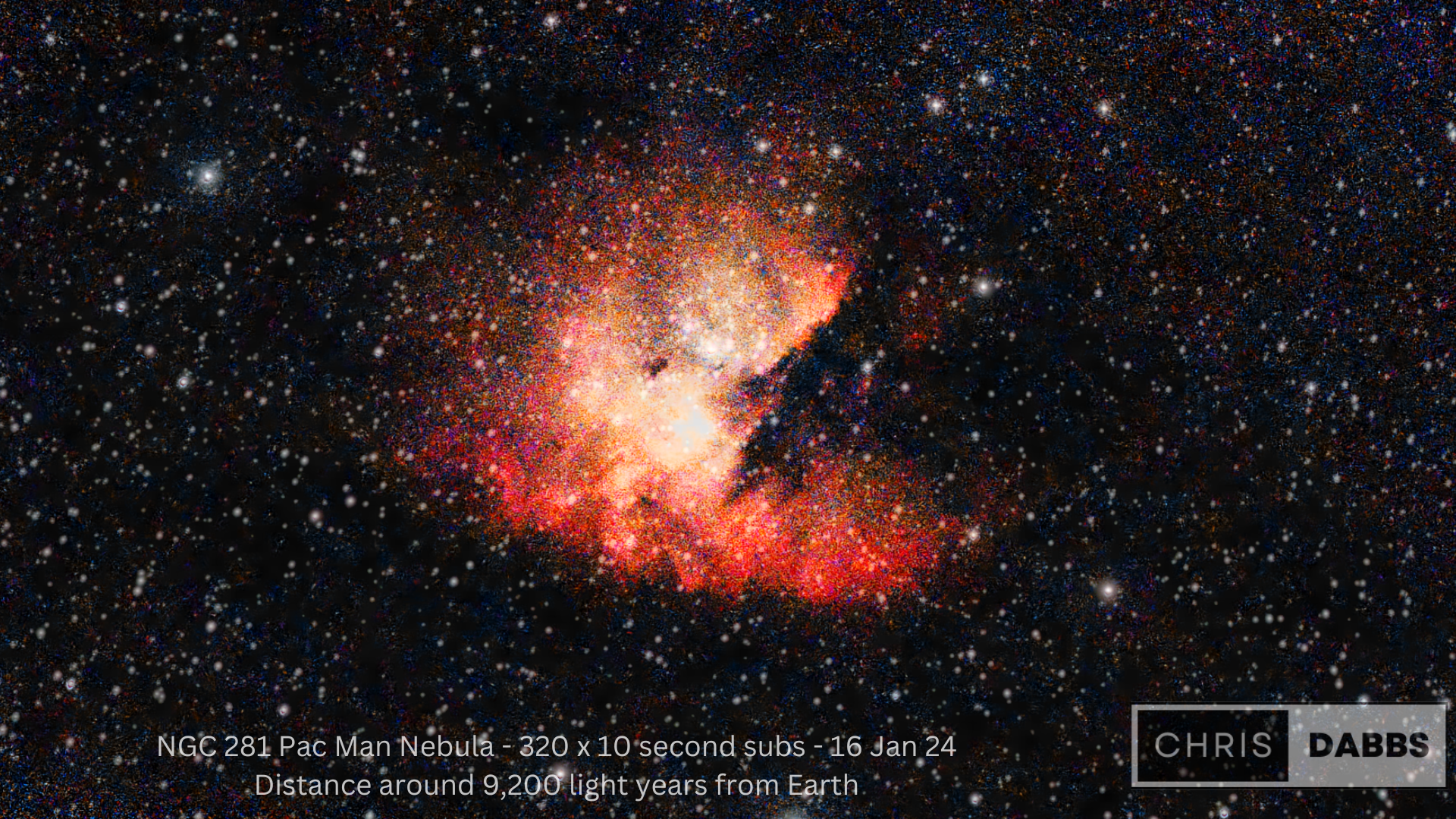

Exploring the Cosmic Arcade: NGC 281, The Pac-Man Nebula
Among the celestial spectacles strewn across our night sky, NGC 281 stands out as a particularly fascinating object. Located approximately 9,500 light-years away from Earth, this emission nebula has been playfully dubbed the Pac-Man Nebula due to its resemblance to the iconic 1980s arcade game character.
Situated in the constellation of Cassiopeia, NGC 281 isn't just another pretty face in the cosmic gallery. This region of active star formation provides astronomers with a vivid laboratory to study the birth and evolution of stars. Unlike the ethereal, twinkling stars we're accustomed to seeing from Earth's surface, the scene within NGC 281 is one of tempestuous beauty—a stellar nursery where new stars ignite from the gravitational collapse of gas and dust.
The colors that make NGC 281 a visual feast are not just for show; they reveal the physical processes happening within. The vivid hues are due to the interaction of the high-energy radiation from the young, hot stars with the clouds of hydrogen gas. When these stars, which are several times hotter and more massive than our Sun, emit intense ultraviolet light, they ionize the hydrogen gas around them. This ionized hydrogen then recombines with electrons and, in the process, emits light at specific wavelengths, predominantly in the red part of the spectrum, giving the nebula its iconic glow.
Other colors arise from the presence of different elements and compounds. Oxygen, for example, emits a bluish-green light under similar processes, while dust within the nebula can reflect starlight and create more complex color variations. The mingling of light from different elements, the scattering of light on dust, and the Doppler effect (where light is red- or blue-shifted depending on the movement of the gas) contribute to the nebula’s palette.
Telescopes equipped with filters that can observe specific wavelengths of light are key to unveiling the nebula’s splendor. These filters allow astronomers to isolate the light from various gasses and create detailed images that help us understand the structure and composition of such distant astronomical features.
NGC 281 provides more than a stunning portrait for us to admire from afar; it gives scientists invaluable insight into the cosmic forces that shape our galaxy. As we gaze upon this celestial arcade game, let's remember the dynamic and ongoing saga of star formation happening within this picturesque nebula.


